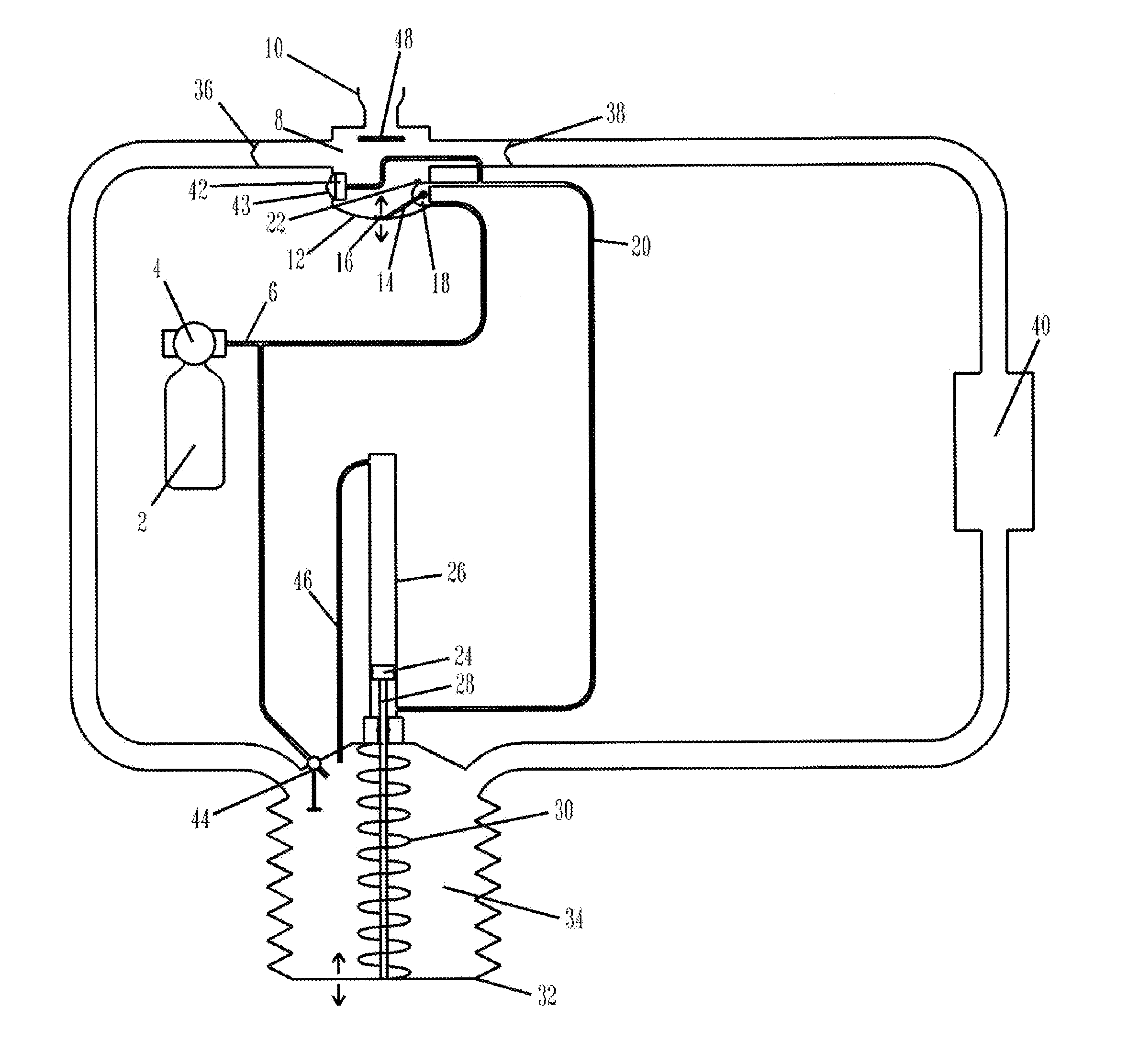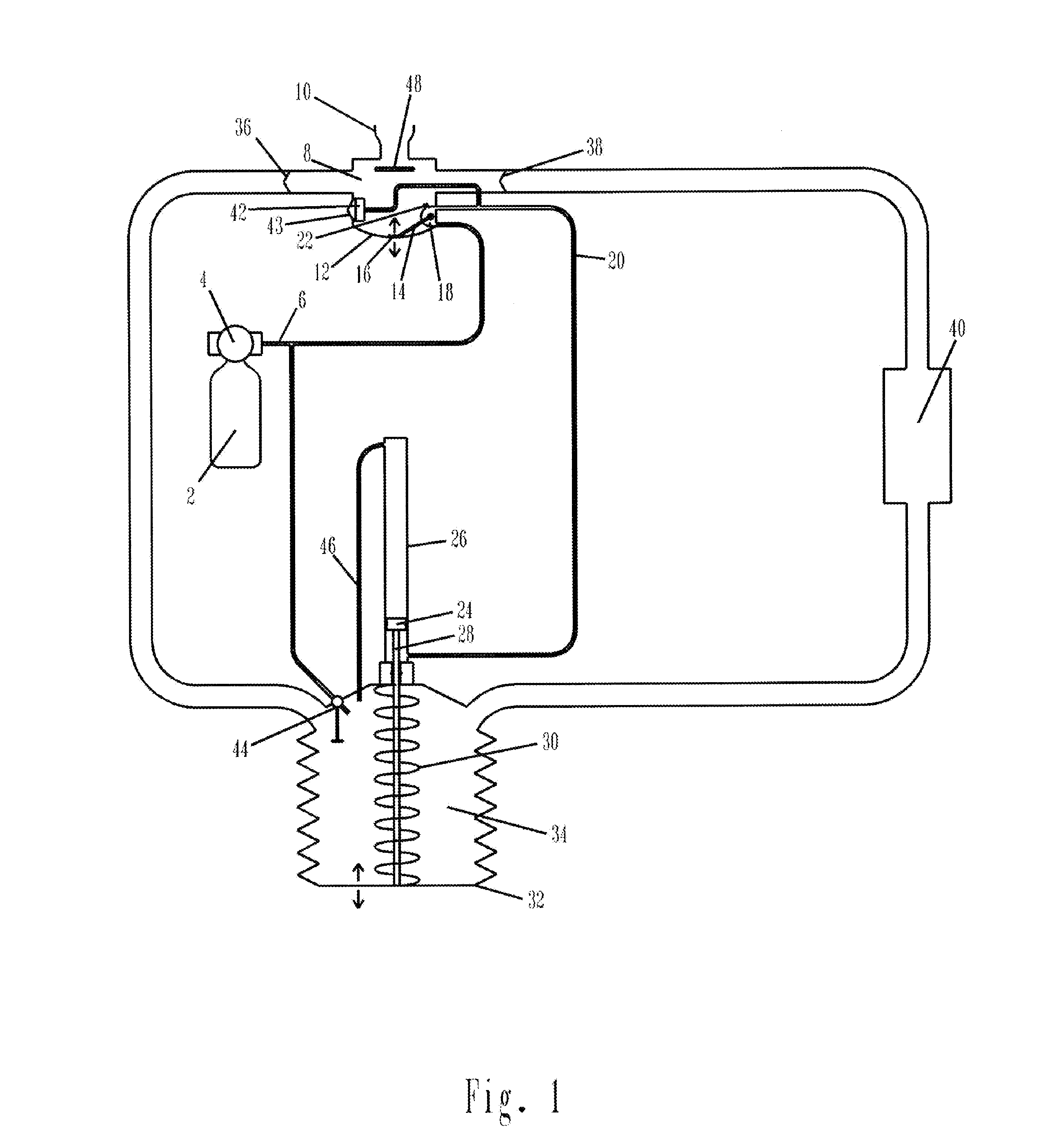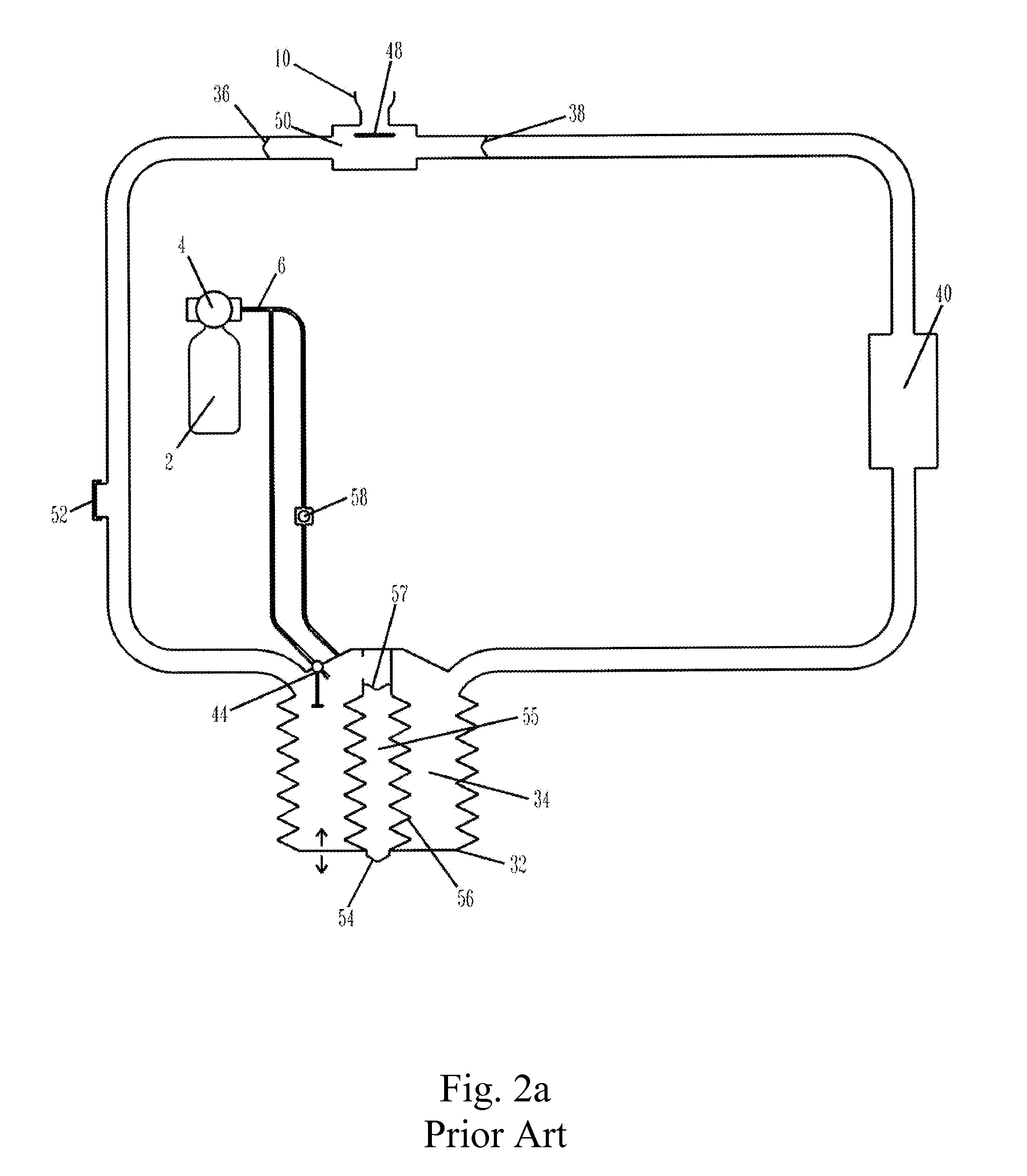Gas assisted re-breathing device
a technology of re-breathing device and gas, which is applied in the direction of breathing mask, underwater equipment, breathing protection, etc., can solve the problems of limiting the amount of time a diver has underwater to the amount of gas carried, increasing the wob required in the loop, and bulk and complexity are too much to handle, so as to reduce the work of breathing, facilitate the introduction of features, and increase the work of breathing
- Summary
- Abstract
- Description
- Claims
- Application Information
AI Technical Summary
Benefits of technology
Problems solved by technology
Method used
Image
Examples
Embodiment Construction
[0024]Referring to FIG. 1, according to a preferred embodiment, high pressure gas storage bottle 2 containing a pressurized gas source with attached high pressure regulator 4, delivers pressurized gas through connecting hose 6 to breathing regulator 8. High pressure regulator 4 is of the well known scuba design, which maintains a constant pressure above the surroundings. Breathing regulator 8 is sealed internally or externally to the mouth of a diver using mouthpiece 10, which allows the diver to breath in and out of breathing regulator 8 such that the divers breathing pressure acts on flexible diaphragm 12. Flexible diaphragm 12 moves inward when the diver inhales and outward when exhaling, acting to move actuator lever 14 in and out, which is loosely held attached to diaphragm 12 by retaining loop 16. Actuator lever 14, responsive to inhale and exhale pressure from the diver, acts on diver inhale to move low pressure regulator valve 18 to direct pressurized gas from connecting hos...
PUM
 Login to View More
Login to View More Abstract
Description
Claims
Application Information
 Login to View More
Login to View More - R&D
- Intellectual Property
- Life Sciences
- Materials
- Tech Scout
- Unparalleled Data Quality
- Higher Quality Content
- 60% Fewer Hallucinations
Browse by: Latest US Patents, China's latest patents, Technical Efficacy Thesaurus, Application Domain, Technology Topic, Popular Technical Reports.
© 2025 PatSnap. All rights reserved.Legal|Privacy policy|Modern Slavery Act Transparency Statement|Sitemap|About US| Contact US: help@patsnap.com



